The Gift of South Dakota
Subscriptions to South Dakota Magazine make great gifts!
Subscribe today — 1 year (6 issues) is just $29!
Big Sioux's Mighty Flood
Editor's Note: Here is a story that longtime Sioux Falls Argus Leader reporter Fred Masek wrote in 1990 about the major floodwaters that swept through Sioux Falls when the Big Sioux River swelled in 1881.
This is the story of a Sioux Falls hotel where the guests departed and then the hotel departed. It is the story of a reporter whose apparent assignment was to identify and record the buildings floating by. When a building broke loose from its foundation and floated away, a news account referred to the episode as a “departure.” Sioux Falls experienced a major flood in April 1881 in which 33 buildings, most of them commercial structures, were swept away by swollen waters of the Big Sioux River. A winter of hardship and sacrifices had already preceded the flood disaster. The setting for the 1881 flood began with the big blizzard of October 1880, and continued with frequent snowfalls.
The snowfall of 1880-81 was unprecedented in the history of the Northwest. It was noted in the History of Southeastern South Dakota, “Not only were the snowfalls immense in volume, but they followed each other with provoking promptness and a strife for ascendancy, worthy of a better cause.”
By the beginning of 1881 the railroad was hopelessly blockaded, mail arrived only at intervals and provisions and fuel became scarce in Sioux Falls. The capitalist, as well as the dweller in the sod shanty, was compelled to take his coffee straight. Sugar was a luxury not to be found. Settlers were described as having to “gather their robes around them to keep warm.”
Thousands of ties, piled up for extension of the Worthington and Sioux Falls Railroad, instead were sold at cost to persons in dire need of firewood. Dana Dailey’s History of Minnehaha County reported that during the winter of 1880 “Sioux Falls was isolated from the outside world as it would have been if surrounded by a hostile army.”
There were signs of easing on April 9, 1881, when trains reached Luverne, Minn. carrying provisions for Sioux Falls. Teams of horses were used to relay the supplies 25 miles to Sioux Falls. However, the town’s 2,000 residents began to feel new apprehension when thawing of the heavy snow accumulation started. Ice began breaking up April 17, and the river started to rise. By Wednesday, April 20, the flood hit hard.
The Dakota Pantagraph and Independent gave its graphic account of the disaster by referring to floating buildings as “departures.” It appeared that a reporter was perched on the riverbank counting and identifying business places and other structures as they floated by.
The weekly newspaper's flood story began, “The departure was noted last week of the railroad and two highway bridges, Weber’s Restaurant, Henjum’s and Olson’s Blacksmith Shop, McKinnon and Ross Planing Mill and Sash Factory, the Cascade Mill office, the Queen Bee Mill office, Cochran’s Stable and Gilbert’s Ice House.
“A blockade of lower water set in on Wednesday morning so that the departure of buildings was suspended. But the rise of Friday after midnight caused them to resume. The first to start were Winchell’s dwelling from below the site of the 10th Street bridge and Jensen’s Blacksmith Shop.
“At 2 o'clock Saturday morning, the remnants of the Riverside Hotel moved out after the guests moved out. There were no further departures until 7 a.m., when the Sioux Falls Mill shoved out.
“Just after dinner, Phil Plaster’s Saloon, near the St. Paul Depot, moved off with its full stock of liquors and cigars. Some of the boys overhauled the wreck below the Falls and had a jamboree.”
“The lumberyards started on their trip about 9 o'clock,” the paper reported, “and some of the contents moved off in nice piles.” Scavengers were busy retrieving boards, shingles, planks and lath from the river.
Most ice storage facilities were lost. A telegrapher sent a message to Worthington, Minn. asking that an icehouse and contents be furnished to the Cataract House.
One man saved his dwelling by the good fortune of his occupation. He operated a brickyard. His house stayed in place after 10,000 bricks were loaded on the first floor.
Although 33 buildings were swept away, there were no deaths attributed to the flood. The newspaper reported, “No funeral was provided with a subject by the flood. Fortunately almost everybody was careful enough to avoid peril.”
One light moment was related to a miller’s experience. The miller was fixing a gangway for crossing water surrounding the Sioux Falls Mill. The story was related as follows: “He had stooped for a board and when he straightened up the mill wasn’t there, so he didn’t get aboard.”
Editor’s Note: This story is revised from the March/April 1990 issue of South Dakota Magazine. To order a copy or to subscribe, call 800-456-5117.



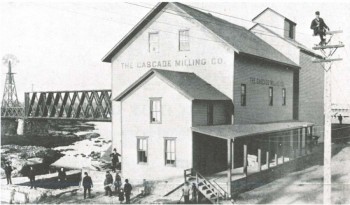
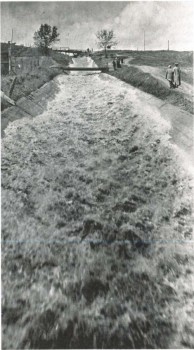
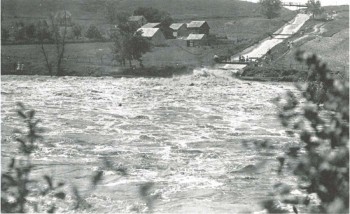
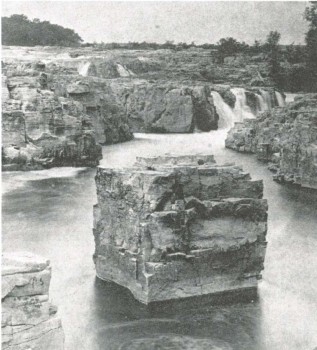
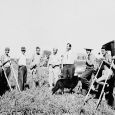







Comments